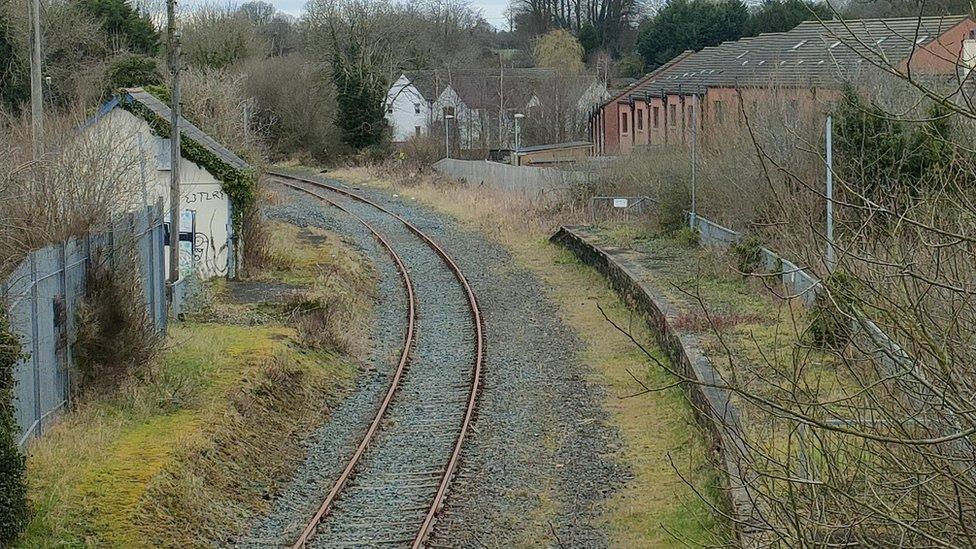NI rail: Is a bigger network coming down the track?
- Published
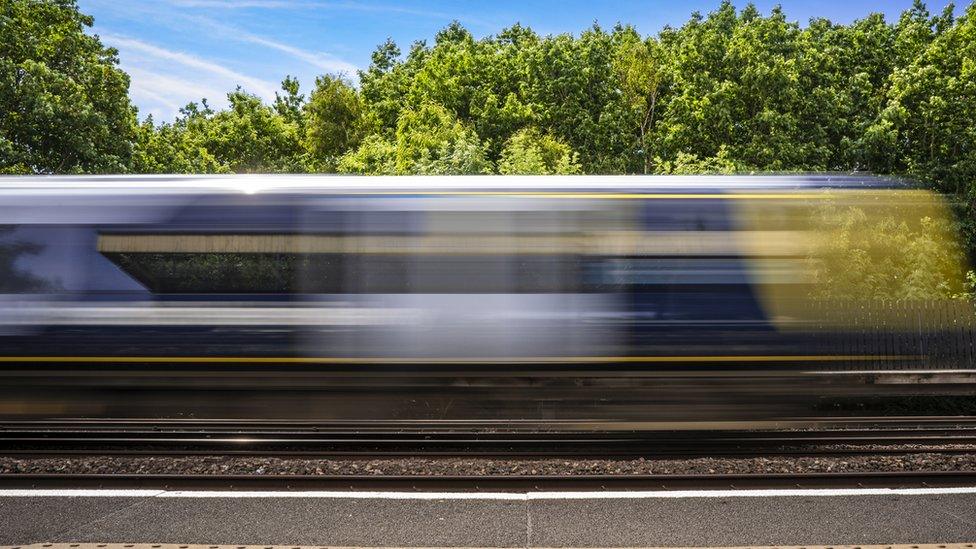
After decades of disappearing lines and station closures, a new era for Northern Ireland's railway system appears to be edging closer.
In July the All-Island Strategic Rail Review was published, setting out a vision for the future of train travel in Ireland.
Eleven of the recommendations would have a direct effect on Northern Ireland, five of which would lead to the current network expanded if they were implemented.
The review was broadly welcomed by groups who have long campaigned on the issue.
In its heyday the Northern Ireland rail system covered most of the country but now there are just over 200 miles of track, mainly in counties Antrim and Down.
"It started disappearing as early as 1950, then there was a large tranche taken out in 1957 and a further 100-odd miles in 1965," says Alan Devers of the Headhunters Railway Museum.
"The Northern Ireland government had a strategy that the car would be the answer - even as early as 1950, when very few people had cars, they were already decimating the system."
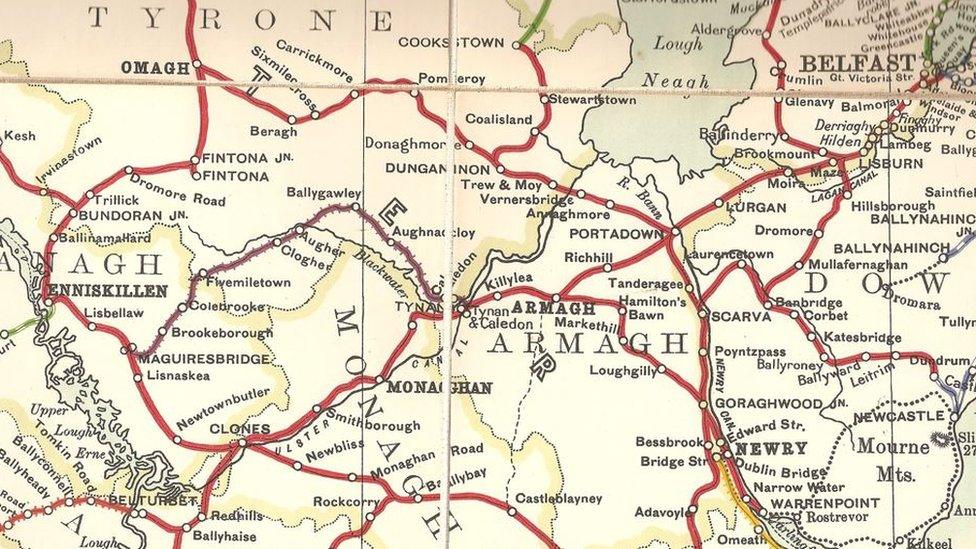
Northern Ireland's rail network looked very different in the first half of the 20th Century
More recent closures include the Knockmore line between Antrim and Lisburn in 2003.
It now looks like that process is going into reverse so what could an expanded network for Northern Ireland look like and what effect could it have?
Connecting the airports
One of the most likely and feasible moves would be to reopen the Knockmore line and create a connection to Belfast International Airport - that is one of the recommendations of the rail review and is already under consideration by Translink.
"In terms of the work that has to be done, very, very minimal," says Andrew McDonald of the Fund the NINE campaign.
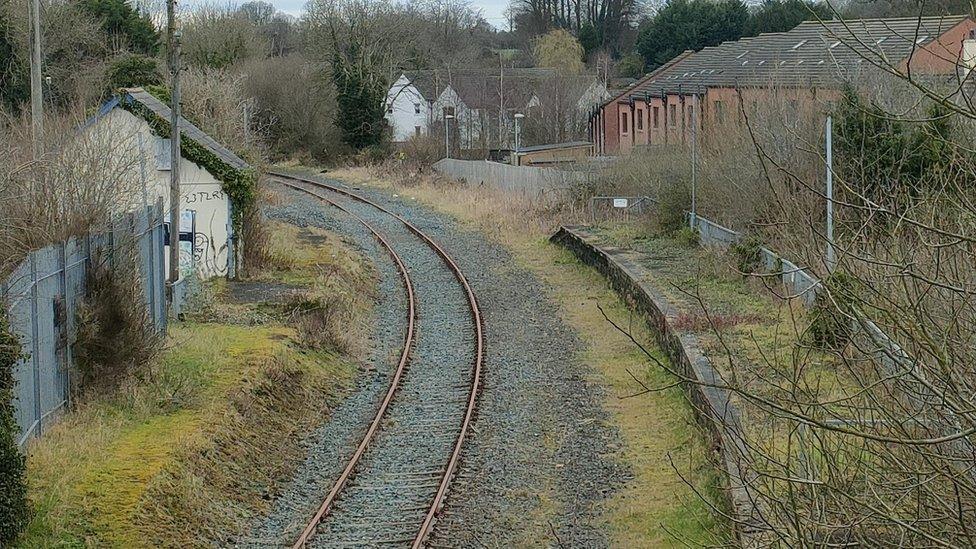
The Knockmore line was mothballed in 2003 but continued to be maintained and could be reopened
"The tracks are there, it's a matter of getting new signals installed, passing loops and rebuilding the stations and obviously getting a spur to the airport and a new station at the terminal."
He says connecting the airport "would change realistically every single fundamental element" of Northern Ireland's tourism industry.
"Having that rail link, people coming in from internationally would be able to get on as soon as they're off the plane straight into Belfast.
"You could go north, you could go to Londonderry, wherever you need to go much quicker and much cheaper."
He said both Translink, which runs Northern Ireland's railways and other public transport services, and Belfast International Airport itself support the connection.
"So you have all these green lights - where's the funding? They could start working on this tomorrow," he says.
"Realistically by 2030 we could have it done - if they put enough money behind it we could have it done by 2025."
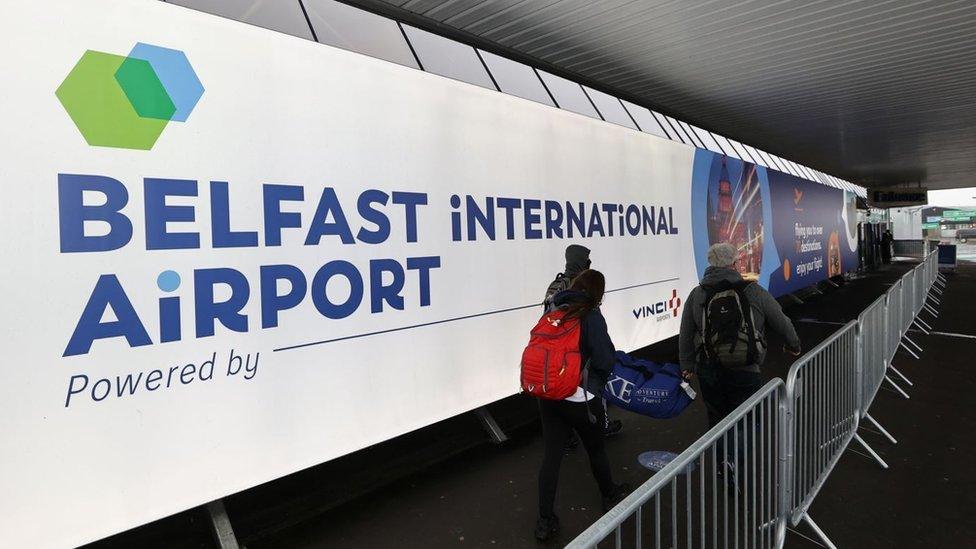
The rail review recommends a train connection for Belfast International Airport
Steve Bradley of the Into the West campaign said all three of Northern Ireland's airports - the International, Belfast City and City of Derry - are close to rail lines, "in some cases within metres".
For Belfast City Airport, the Circle Line campaign group advocates replacing Sydenham train station with a new station behind east Belfast's Blanchflower Stadium to serve the airport.
Mr Devers says that Belfast City Airport's connectivity "could be improved quite easily" because of its proximity to the Bangor line, as could City of Derry Airport close to the Londonderry line.
"It wouldn't take a huge amount of investment to do those particular things," he says.
Reconnecting the west
Another recommendation of the rail review is a new 100mph (161km/h) dual line between Derry city and Portadown in County Armagh.
Two counties in the west - Tyrone and Fermanagh - have no rail connection at all.
The Into the West group was founded in 2004 and its key aim is the establishment of a new north-west rail corridor, reopening services between Derry and Letterkenny in County Donegal and Derry and Portadown.

The Into the West campaign envisages a new north-west rail corridor
Other aims are the opening of a Lough Neagh loop and the restoration of service to County Fermanagh but the group admits those are much less likely to happen in the near future.
"Restoring rail to Letterkenny and between Derry and Portadown we'd be pretty confident about," says Mr Bradley.
"We think the case is very strong - we're told that the estimation in the railway review was that you would have about three million passengers a year travelling between Derry and Portadown, which are big numbers for rail in Ireland.
"There is a thirst among the public to sort out Donegal's connectivity and the easiest way to do that is to link Derry and Letterkenny together, it's only 21 miles (34km)."
Mr Bradley says he "can't think of any other project that would do so much for the west of Northern Ireland than reopening its rail".
"The Derry-Portadown route would restore rail to more counties and more towns of significance across Northern Ireland than any other single opening would," he says.
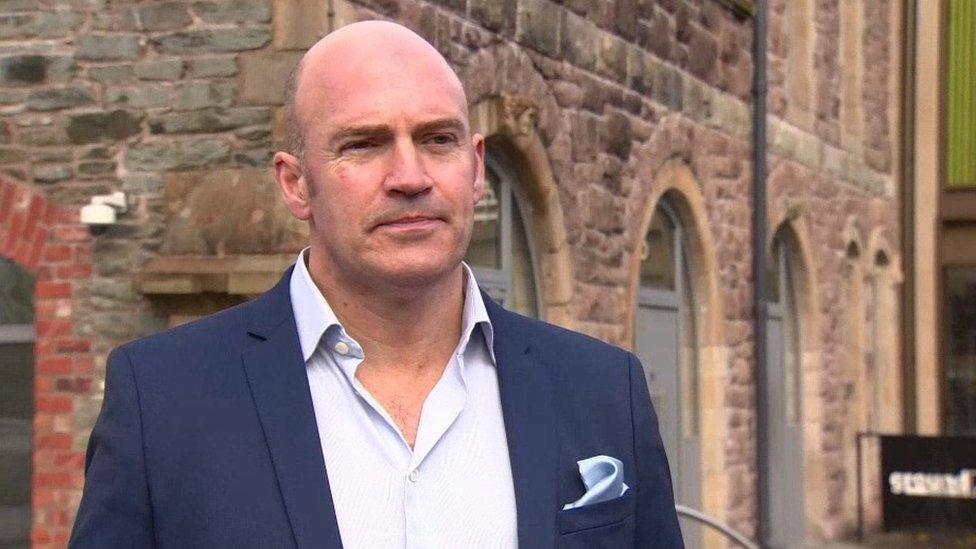
Steve Bradley says County Tyrone would be transformed with the return of the Derry-to-Portadown line
"It would completely change the nature of Tyrone as a county, for example, which feels very isolated.
"The place that has the lowest number of households with access to a vehicle in Northern Ireland is County Tyrone.
"How do you get around without a vehicle?"
A commuter circle around Belfast
The Belfast Circle Line campaign wants to connect Belfast city centre with the International Airport, the City Airport and rural villages and commuter towns with services every 15 minutes.
Aaron Vennard from the group says that if the line opened it would have the largest catchment area of any in Northern Ireland, with about 300,000 people living within a mile of the track.
As well as upgrading existing stations, the campaigners are calling for new stations, including at the Cathedral Quarter in Belfast.
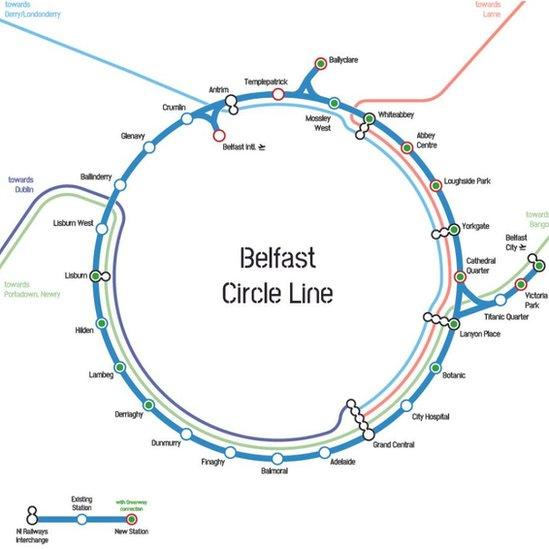
The Circle Line campaign wants to increase connectivity to Belfast city centre, two airports and towns and villages close to the city
"The idea is that the service would run super regular - every 15 minutes going clockwise and anti-clockwise from Antrim, Templepatrick, possibly Ballyclare in the future and then into north Belfast with new stations in there," says Mr Vennard.
"On to Yorkgate and then out to Belfast City Airport, back into the city centre, down through south Belfast to Lisburn and then on to the International Airport and Crumlin.
"Super frequent so you wouldn't have to check the timetable - you just turn up and those services would run up to midnight."
He points to a 2019 Belfast City Council target to have 66,000 more people living in the city centre by 2035.
"If 66,000 people envisage bringing a car into the city centre, the city is just going to be more gridlocked than it is currently," he says.
"We could probably do it in the next five years, albeit the service would not be every 15 minutes, it would likely be every 30 minutes."
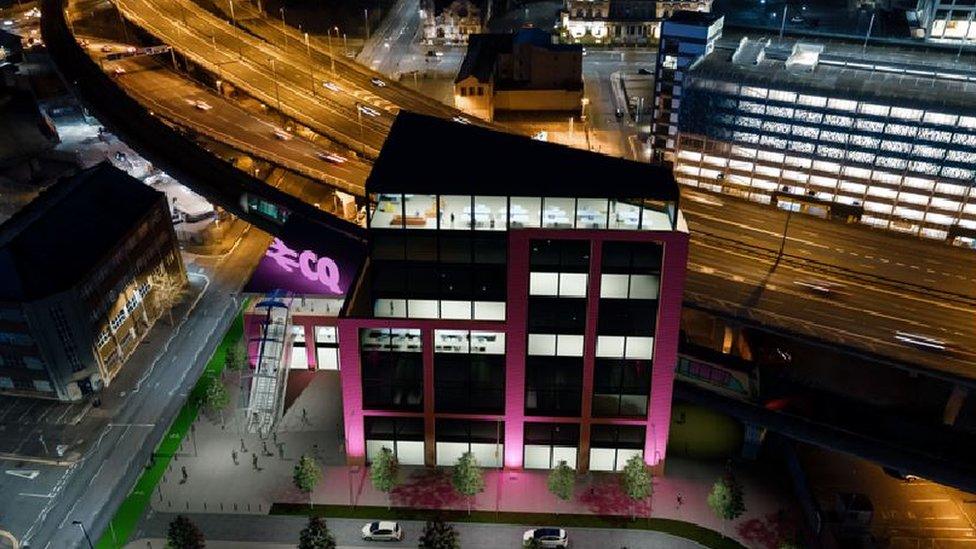
A new station at the Cathedral Quarter is envisaged by Circle Line campaigners
He says Translink "seem keen" but funding remains the key issue.
"In terms of railways in Wales and Scotland, Wales spends three-and-a-half times more per head and Scotland spends five times more per head than in Northern Ireland on railways," he adds.
What's the official stance on railway expansion?
The rail review envisages the cost of implementing its 30 recommendations at between €35bn (£29.2bn) and €36.8bn (£31.6bn), with Northern Ireland expected to pay a 25% share of that.
Mr Bradley says "the money needs to be found" but it's also "political will we need".
Stormont's Department for Infrastructure says work will be needed "to test the feasibility and environmental impact" of the rail review recommendations and to secure the necessary funding.
Translink says it supports the "vision for an expanded railway network" that in turn would "enhance the economy, improve health and help address climate change".
- Published25 July 2023

- Published11 June 2023
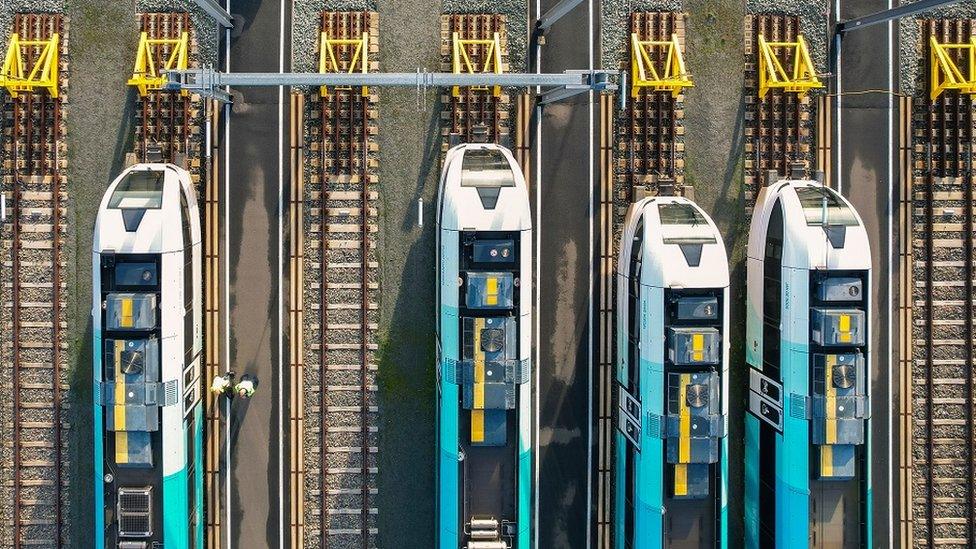
- Published3 March 2023
